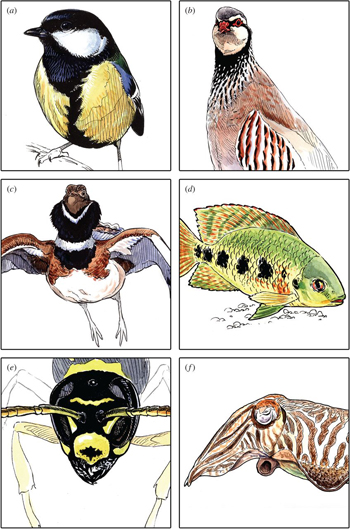Colour patterns (e.g. irregular, spotted or barred forms) are widespread in the animal kingdom, yet their potential role as signals of quality has been mostly neglected. However, a review of the published literature reveals that pattern itself (irrespective of its size or colour intensity) is a promising signal of individual quality across species of many different taxa. Here, at least four main pathways are proposed whereby patterns may reliably reflect individual quality: (i) as conventional signals of status, (ii) as indices of developmental homeostasis, (iii) by amplifying cues of somatic integrity and (iv) by amplifying individual investment in maintenance activities. Methodological constraints have traditionally hampered research on the signalling potential of colour patterns. To overcome this, a series of tools are reported that allow objective quantification of pattern variability. This study argues how information provided by these methods should consider the visual system of the model species and behavioural responses to pattern metrics, in order to allow biologically meaningful conclusions. Finally, authors propose future challenges in this research area that will require a multidisciplinary approach, bringing together inputs from genetics, physiology, behavioural ecology and evolutionary-developmental biology. información: [at]ebd.csic.es: Pérez-Rodríguez et al (2017) Shape matters: animal colour patterns as signals of individual quality. Proc R Soc B 284: 20162446 http://dx.doi.org/10.1098/rspb.2016.2446


 Las altas temperaturas están provocando que las lagunas y las marismas de Doñana pierdan agua rápidamente
Las altas temperaturas están provocando que las lagunas y las marismas de Doñana pierdan agua rápidamente




